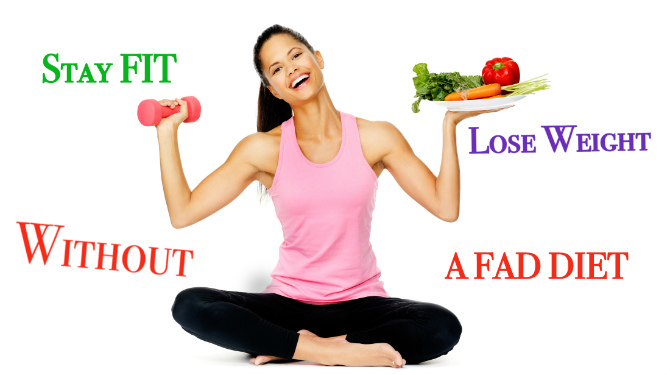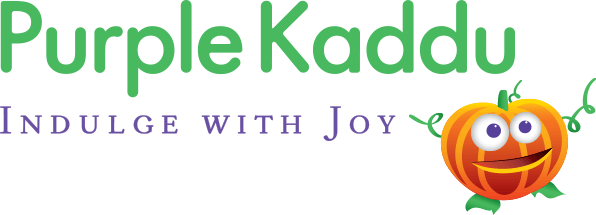
The Pros & Cons Of 6 Popular Fad Diets

Fad diets have been born and growing real fast since “being slim” came to be the “in thing”. Earlier following a particular diet was a requirement in case of ill-health, nursing back to health and for general well-being. Fast-forward to present, being “on a diet” is by far done to get that lean body in the name of good health. Since numerous diets have come, gone and come again, we review some which have caught on, got a foothold on people’s stomach.
But why are these diets called “fad diets”? Just because of all the hype? That is partly the reason, the other is that these diets come with clear instructions on how much to eat, when to eat, how long it is to be followed with promises of rapid weight loss, for example having 4 glasses pumpkin juice a day to shed weight. This makes it real simple for people to get hooked on, follow it, then dump it and follow another one because fad diets are difficult to continue till death does it apart. On the other hand following the general dietary guidelines for healthy living seem ambiguous and not clearly defined, making it difficult for people to follow. Here we review some of the popular diets that have created quite a buzz:
The Paleo Diet
Also called as the caveman diet emphasizes on consuming foods which were had by our caveman ancestors which include nuts, fruits, vegetables, eggs and meat, eliminating grains, sugar, salt and all processed foods as these were not available eons ago. The diet claims to shed unwanted fat to get your body to your ideal body weight, cleanse the body of built-up toxins, sharpen the mind, and provide a deeper connection to your body's inner being.
Pros:
- Higher intake of fruits and vegetables
- Intake of essential fatty acids is high
- Higher protein intake which reduces appetite and brings down hunger pangs and frequent binging
- Does not require counting or measuring of consumption
- Avoiding processed foods, high sugar and salt
Cons:
- Not suitable for vegans or vegetarians
- Did our ancestors eat like this? No clear records
- Cutting down entire food categories which is dairy and cereals can lead to negative long term effect on body like low calcium, unbalanced nutrients.
- The diet encourages large amounts of meat, which is opposite to current health advice on meat consumption.
- The quality of meat and vegetables is not the same as it was in pre-historic times. So you might not be getting those essential nutrients in the amount boasted for in the diet.
Atkins Diet
A diet based on eating low carbohydrates and high protein foods.
Pros:
- Helps in shedding excess weight, quick results
- Provides better satiety and low sodium as packaged foods are eliminated
- Low intake of carbohydrates, thus lower intake of refined foods and sugars
- Provides a structured diet plan with foods to be included and those to be excluded
- Eliminates caffeine and alcohol and more intake of legumes and vegetables
Cons:
- High intake of protein also leads to higher intake of fats.
- Difficult to follow on a long term basis due to high carbohydrate restriction
- Eliminates entire food categories
- It is not the cutting down of carbohydrates but limiting food choices and high intake of protein and fat that leads to more satiety thereby leading to weight loss
- Complex carbohydrates are cut down which reduces intake of fibre and essential vitamins from them. Also, elimination of nuts and oilseeds leads to reduction “good fats” by the dieter.
- Much of the weight loss is due to loss of fluids and low carbohydrate can cause “ketosis” (accumulation of ketone bodies) that is bad for health.
Blood Type Diet
The diet plan is founded on the principle that every person is different and so are the diet needs, courtesy their blood group.
Pros:
- Personalized as per the blood group.
- Most diets for different blood groups eliminate protein sources which have lectins in them like most legumes. Lectins is an antinutrient which may have negative effect on gut lining.
- This diet removes the majority of unhealthy processed foods from people’s diets.
Cons:
- Elimination of entire food categories for different blood groups can leave the individual with deficiencies of certain essential minerals and vitamins and have negative impact on overall health. For example cutting out dairy products recommended for blood group O will lead to poor intake of calcium.
- No proper scientific evidence is available for the blood type diet
- Because of the individualized plans, this diet would be difficult for families or groups to try together because varying blood types would require different eating plans and exercise schedules.
Gluten-free diet
This diet calls for elimination of foods that contain gluten which are cereals like wheat, rye, barley and their products like semolina, spelt, wheat germ and wheat bran. To some extent oats is also a source of gluten mostly due to its growing along with wheat.
Pros:
- Beneficial for individuals who have celiac disease or allergy to gluten which is a type of protein.
- General overall betterment in health.
Cons:
- People without the allergy do not really benefit from eliminating gluten from their diet. No major weight loss has been seen on the diet.
- You would be devoid of essential nutrients from these whole grains.
- The cost for gluten-free food products is higher and many contain higher amount of fat and sugar.
- Gluten also lurks in many other products, including frozen vegetables in sauces, soy sauce, some foods made with “natural flavourings,” vitamin and mineral supplements, some medications, and even toothpaste. This makes following a gluten-free diet extremely challenging.
Macrobiotic Diet
The macrobiotic is primarily a vegetarian diet, with the occasional fish and seafood, and a focus on natural and organic foods. The majority of the plan comprises of whole grains (especially brown rice) and vegetables. Other regular foods include beans, legumes, Miso soup, and sea vegetables. Based on two food groups, “yin” which is passive foods and “yang” which are aggressive foods. Also, sufficient chewing of food and eating slowly is facilitated.
Pros:
- Low salt and low fat diet, as it includes fish and seafood (lean protein).
- Can be easily followed by vegetarian/ vegan.
- Proper chewing and enough intake of fluids aids in better digestion.
- Devoid of processed foods, sugars, and other unhealthy foods that are overly used
Cons:
- A diet consisting primarily of brown rice, beans, soup, and vegetables will rarely get anyone excited to eat, and this may be enough to turn some people off.
- Exercise is a factor not taken into account in the diet
- Plan maybe too constrictive for long term use
Zone Diet
This diet is the brainchild of Dr Barry Sears which works on the principle of consuming carbohydrates, proteins and fats in the ratio 40:30:30 respectively. More emphasis is given to this ratio rather than cutting down on calories.
Pros:
- Restriction of simple carbohydrates which have low nutritional value and favours low-glycemic foods
- Inclusion of more lean protein, vegetables, good amounts of fruits, low starch vegetables and low saturated fats.
- Diet claims to help lose more fat
- Recommends moderate but consistent exercise
Cons:
- It is difficult to stick to the exact ratio recommended on a long term basis
- Within each food group there are certain foods you need to avoid and certain you need to eat. This can be a limiting factor for intake of certain essential nutrients.
- If you are looking for a simple plan where you can eat out easily and don't always need to be watching the clock, this isn't a good choice.
- Like most other fad diets, zone diet is also anti-carbohydrate as it eliminates eating of carbohydrate rich foods like pasta, noodles, rice etc and focuses on low- carbohydrate foods.
Thus, with some of these fad diets doing rounds in the “market of diets”, each with its own health claims, it is indeed hard to select that perfect diet for you. Popular fad diets currently range from very low carbohydrate to very low fat and from well-defined eating patterns to grazing. No matter which one you choose, sticking to a fad diet can be difficult to stick to for the long haul and may lead to nutritional deficiencies in some cases. Thus, the best way is to opt for a slow and steady healthy weight loss by eating in moderation with small changes in eating habits and inclusion of all foods for a better health.










